Why Believe in the Real Presence?
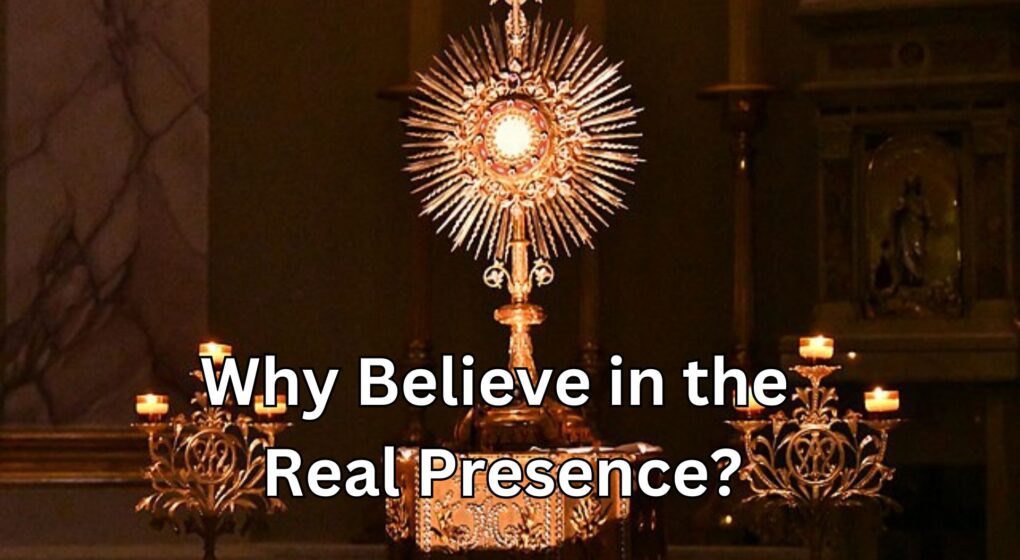
Why Believe in the Real Presence?
Catholics believe in singular miracles like creation from nothing and God becoming man, as well as ongoing miracles like the Eucharist. Every time a Catholic priest says the Eucharistic prayer, ordinary bread and wine are miraculously changed into Jesus. We believe that Jesus is really present in the Eucharist, his living body and blood together with his soul and divinity.
But why would we possibly believe this? After consecration, there’s no outward change. It still looks like unleavened bread, still tastes like red wine. A chemist could confirm they still retain all the physical and chemical properties of bread and wine. So why do Catholics believe that under the appearance of bread and wine is the miraculous real presence of Jesus?
Because Jesus said so.
In John 6, Jesus promises to give us his literal flesh and blood as food: “I am the living bread which came down from heaven; if any one eats of this bread, he will live forever; and the bread which I shall give for the life of the world is my flesh” (verse 51). Jesus fulfilled this promise at the Last Supper. So let’s take a closer look at John 6.
There are at least four reasons we know that Jesus was talking literally and not symbolically about his real flesh and blood:
- 1Jesus claims his bread is superior to the manna given to the Israelites: “I am the bread of life. Your fathers ate the manna in the wilderness, and they died. This is the bread from heaven that a man may eat of it and not die (verses 48-50). The manna was supernatural bread raining down on the Israelites 6 days a week for 40 years in vast quantities. Jesus says his bread miracle will be greater than the manna. But mere earthly, natural bread serving as a symbol of Jesus is manifestly inferior to the heavenly, supernatural manna. Christ’s bread must be more real and more miraculous than even the manna. Crackers and grape juice won’t cut it. But Jesus, truly present in the Eucharist, will.
- 2Everyone who heard Jesus’ “bread of life” discourse took him to be speaking literally. “How can this man give us his flesh to eat?” demand the unbelieving Jews (verse 52). “This is a hard saying; who can listen to it?” object his unbelieving disciples (verse 60). Many of these disciples had been with Jesus for two years. They spoke the same dialect, used the same idioms. They heard Jesus speak symbolically—through parables, allegories, and analogies (like calling Herod a fox)—and they heard him speak literally. Furthermore, they witnessed Jesus “live” and in person—his gestures and emphasis. They all took him literally, never even asking him to explain himself. They understood perfectly that Jesus meant precisely what he said.
- 3If Jesus were only speaking symbolically, when his entire audience mistook him literally, the good teacher would have corrected them. He would have explained they were misunderstanding him, that he was only speaking figuratively, as he had many times before (John 3:3-5, John 11:11-14). Instead, using the strongest possible language, Jesus emphatically repeats the literalness of his teaching—six times in six verses (verses 53-58)! “Truly, truly, I say to you, unless you eat the flesh of the Son of man and drink his blood, you have no life in you (verse 53). “For my flesh is food indeed, and my blood is drink indeed” (verse 55). Not the language of symbolism! “Truly, truly, I say to you, unless you eat the flesh of the Son of man and drink his blood, you have no life in you (verse 53). “For my flesh is food indeed, and my blood is drink indeed” (verse 55). Not the language of symbolism!
- 4Many of Jesus’ own disciples won’t accept the literalness of his teaching and walk away (verse 66). Notice that Jesus doesn’t call them back and explain he was only speaking figuratively, as he had on previous occasions when they mistook him literally. For example, in John 4:31-41, Jesus says, “I have food to eat of which you do not know.” His disciples take him literally, so Jesus corrects and explains: “My food is to do the will of him who sent me….” In Matthew 16:5-12, Jesus warns, “beware of the leaven of the Pharisees and Sadducees.” Once again, his disciples take Jesus literally. Again, Jesus corrects them and explains he is not talking about real bread. “Then they understood that did not tell them to beware of the leaven of bread, but the teaching of the Pharisees and Sadducees.” Jesus doesn’t call the unbelieving disciples back and offer to explain for an obvious reason: they understood exactly what he meant. They just wouldn’t accept it. Even the twelve Apostles are shaken. But Jesus doesn’t compromise one bit. Instead, he challenges his own hand-picked, personally-trained Apostles: “Will you also go away?” (verse 67). Peter answers in faith: “Lord, to whom shall we go? You have the words of eternal life” (verse 69).
We have two choices:
We can either doubt like the unbelieving Jews and disciples, or we can believe like Peter that Jesus will somehow keep his promise.
We can see why before delivering this challenging Eucharistic discourse, Jesus performs two of his most famous miracles: (1) the multiplication of the loaves and the feeding of the 5000 (verse 6); and (2) walking on water and calming the storm (verse 19).
Both miracles demonstrate Jesus’ absolute mastery over the natural world. He who can multiple bread, walk on water, calm the tempest, cure the sick, and raise the dead, can miraculously transform bread and wine into his flesh and blood by his divine word.
John 6:53, 58
"Truly, truly, I say to you, unless you eat the flesh of the Son of man and drink his blood, you have no life in you... For my flesh is food indeed and my blood is drink indeed."
We can also see why Jesus stresses the theme of faith so strongly in this chapter (especially verses 61-65. The Jewish crowds and many of his own disciples reject Christ’s teaching because of their lack of faith. We Catholics should always appreciate and nurture this special gift of faith that enables us to believe in the Real Presence. And we should pray for those who don’t yet accept this great gift and mystery that so exceeds our human understanding.
Looking for a comprehensive guide to deepen your understanding of the Real Presence of Christ in the Eucharist and effectively explain and defend this central Catholic doctrine? Look no further than "Beginning Apologetics 3: How to Explain and Defend the Real Presence of Christ in the Eucharist" by Fr. Frank Chacon and Jim Burnham.
Catholic Faith Store is the Official Distributor of the best-selling series, Beginning Apologetics. A Catholic Apologetic Series Available in English and Spanish. An easy-to-read, easy-to-understand, Catholic Apologetic book series is a must have resource that helps to explain the Catholic Faith to young and older Catholics, non-believers and those of a different faith. Defend the Catholic Faith with clearly formatted information and numerous Bible examples and quick references.
Ideal for Bible Study Groups, Catechism directors, RCIA classes, Confirmation preparation, and Catholic youth groups as the series addresses all the topics that Catholics may be questioned about.
A comprehensive series of Apologetic Books written in collaboration by Jim Burnham and Father Frank Chacon.
About the Author
Jim Burnham
Writer & Apologist
A cradle-Catholic evangelist, the second oldest of ten children. He graduated as valedictorian from Hillsdale College in 1989 with a degree in philosophy. Later he attended Thomas Aquinas College where he met his wife, Lisa. They have been married since 1992 and have six children. Jim has given hundreds of seminars to teach Catholics how to charitably and effectively defend their faith. He is the co-author of more than ten publications, including the popular Beginning Apologetics series. Jim has been a guest on the radio program Catholic Answers. Catholic Faith Store is the official distributor of the Beginning Apologetics series.


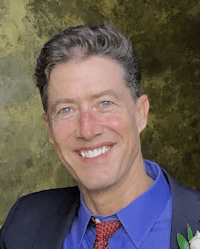





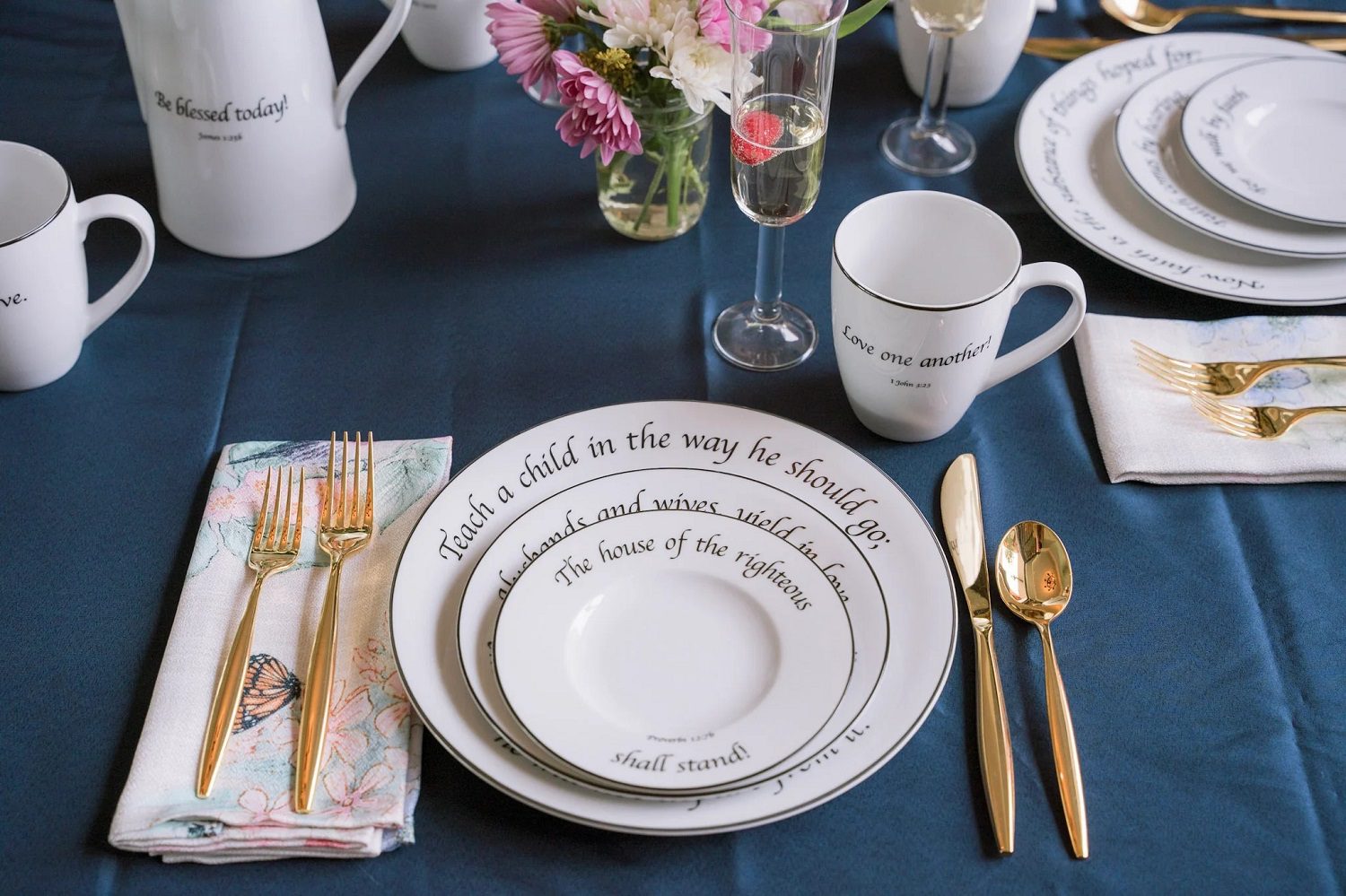
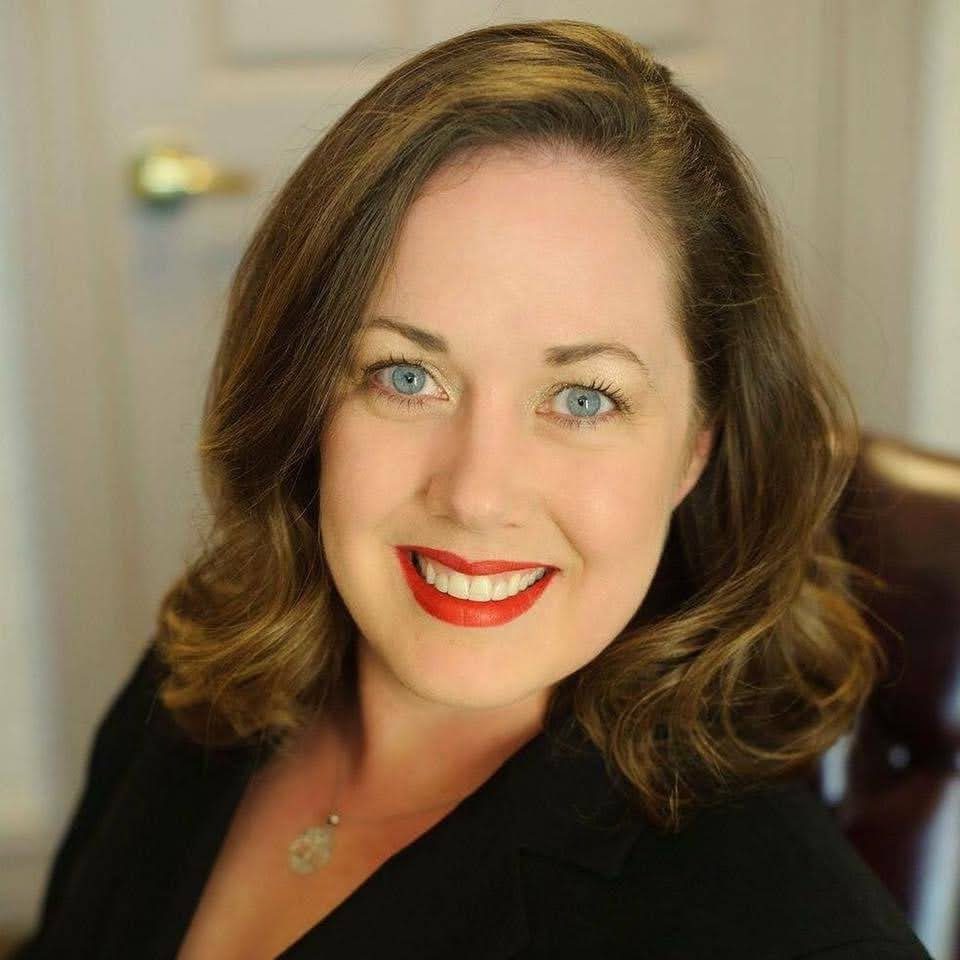

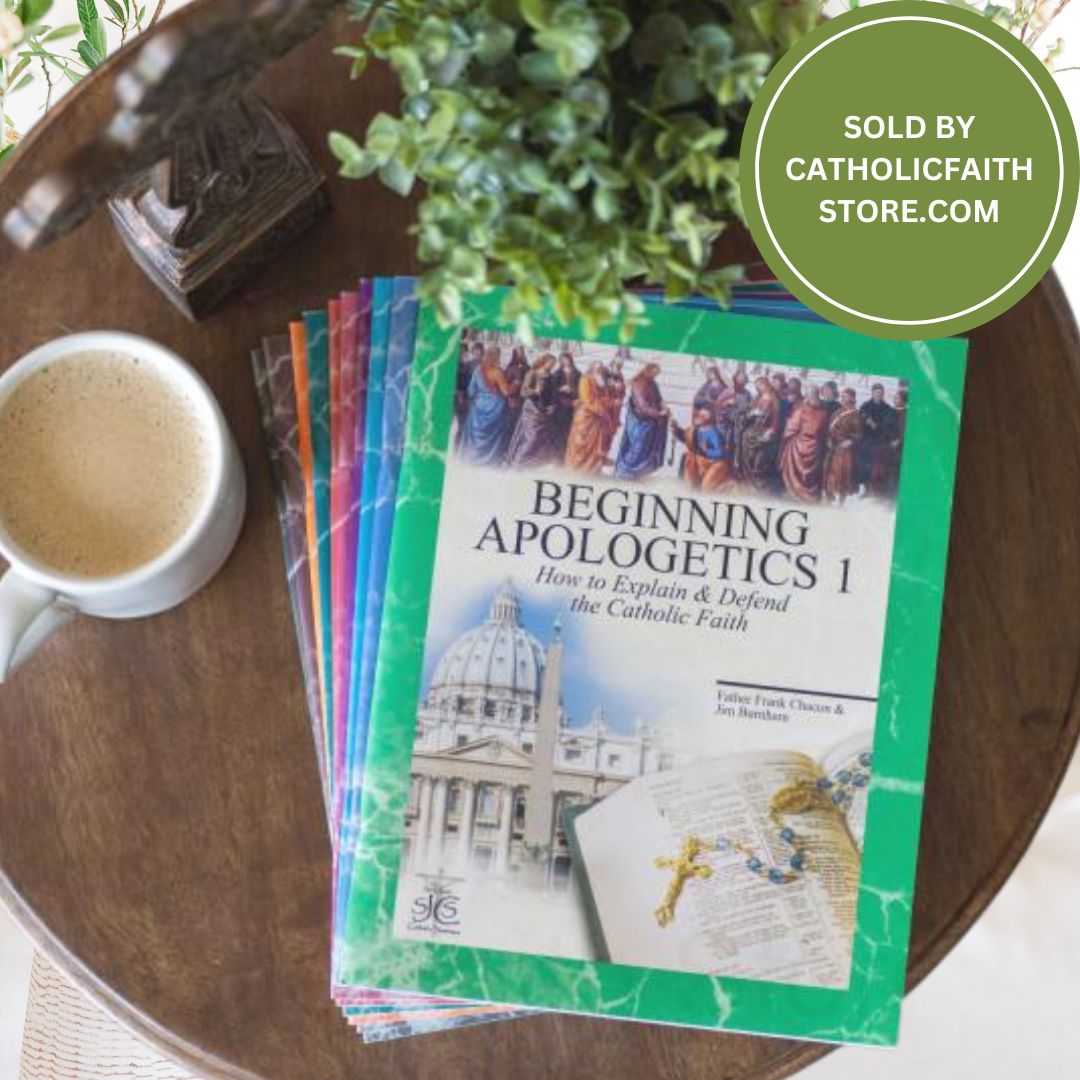


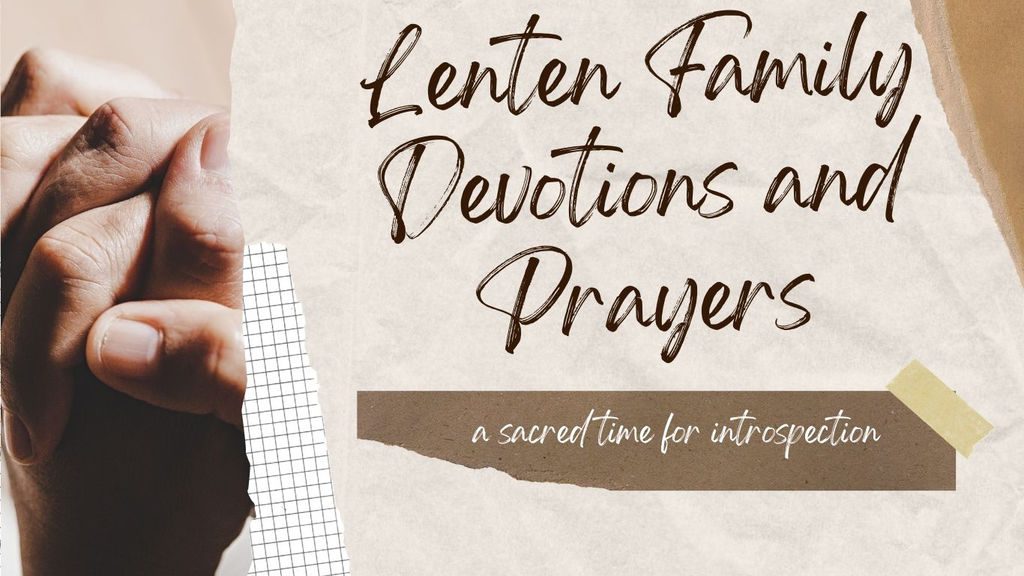
![Stations of the Cross 8x10 Framed Plaque [HFA0213]](https://b960748.smushcdn.com/960748/wp-content/uploads/2024/01/Stations-Cross-Gold-Framed-Print_HFA0213.jpg?lossy=1&strip=1&webp=1)
![Prayer To Jesus Crucified Laminated Prayer Cards [HPR135]](https://b960748.smushcdn.com/960748/wp-content/uploads/2024/01/HPR135.jpg?lossy=1&strip=1&webp=1)
![Pieta Statue in White Resin with Base - 7 Inches [GSP75039]](https://b960748.smushcdn.com/960748/wp-content/uploads/2024/01/Pieta-Statue-in-White-Resin-with-Base-7-Inches_GSP75039.jpg?lossy=1&strip=1&webp=1)

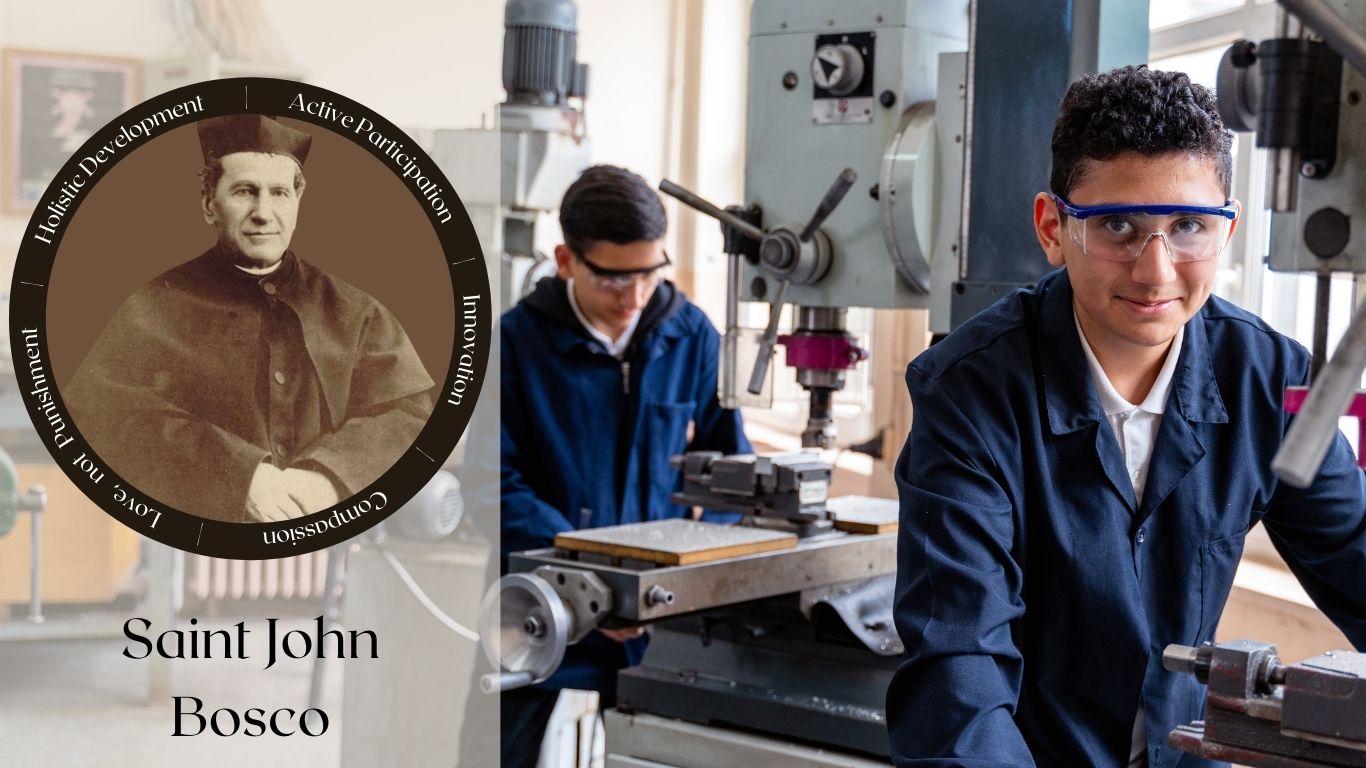
![Saint John Bosco & Saint Dominic Savio Ready to Frame [CAC109]](https://b960748.smushcdn.com/960748/wp-content/uploads/2023/12/Saint-John-Bosco-Saint-Dominic-Savio-Ready-to-Frame_CAC109.jpg?lossy=1&strip=1&webp=1)
![St. John Bosco Biography Laminated Prayer Cards [HPR468]](https://b960748.smushcdn.com/960748/wp-content/uploads/2023/12/HPR468.jpg?lossy=1&strip=1&webp=1)
![St John Bosco Medal [EN6138]](https://b960748.smushcdn.com/960748/wp-content/uploads/2023/12/St-John-Bosco-Medal_EN6138.jpg?lossy=1&strip=1&webp=1)


![Saint Sebastian Soccer Rosary with Prayer Card [MVR0655]](https://b960748.smushcdn.com/960748/wp-content/uploads/2023/12/Saint-Sebastian-Soccer-Rosary-w-Prayer-Card_MVR0655.jpg?lossy=1&strip=1&webp=1)
![St Sebastian Medal [EN6212]](https://b960748.smushcdn.com/960748/wp-content/uploads/2023/12/St-Sebastian-Medal_EN6212.jpg?lossy=1&strip=1&webp=1)
![Prayer To St. Sebastian Laminated Prayer Cards [HPR541]](https://b960748.smushcdn.com/960748/wp-content/uploads/2023/12/HPR541-600x600-1.jpg?lossy=1&strip=1&webp=1)

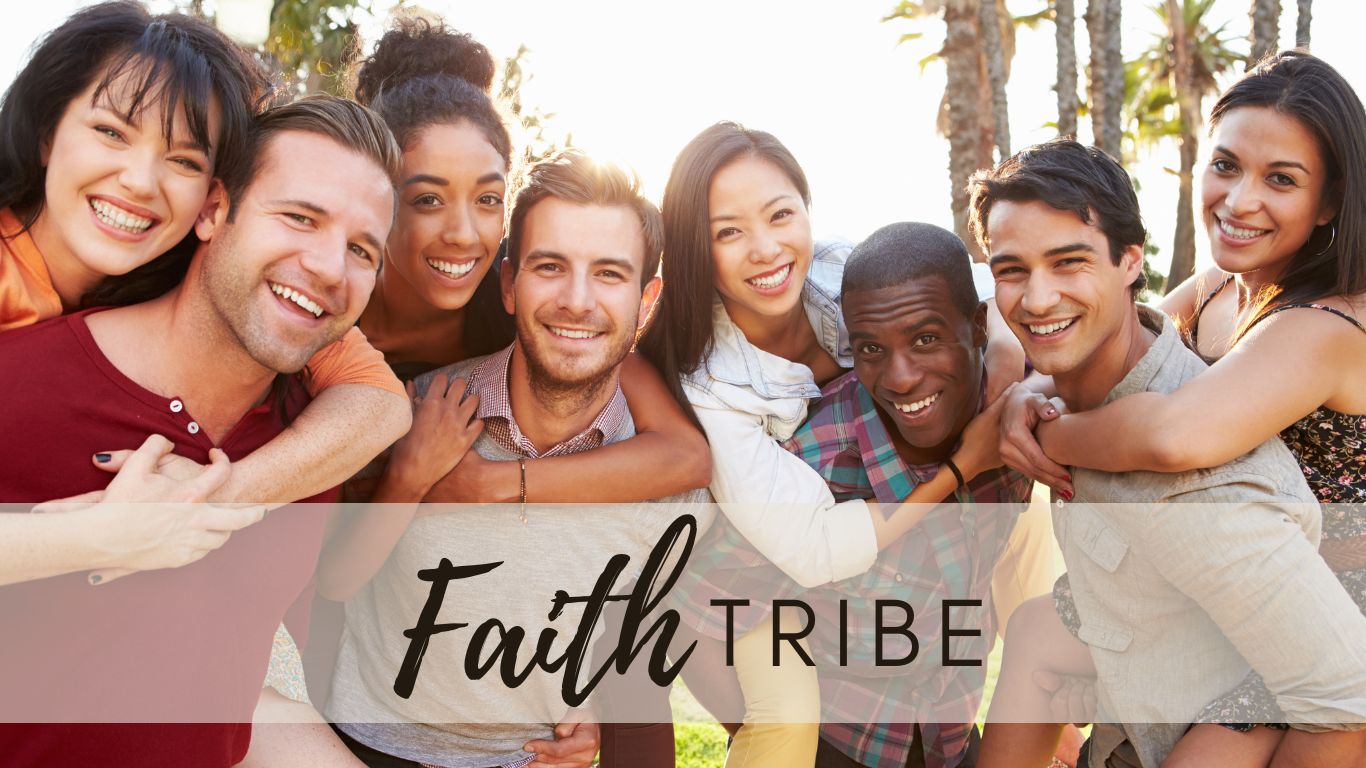
![Beginning Apologetics SUPERSET [SJCSSUPERSET]](https://b960748.smushcdn.com/960748/wp-content/uploads/2023/06/SJCSSUPERSET-SuperSet.jpg?lossy=1&strip=1&webp=1)
![Friendship Laminated Prayer Cards [HPR729]](https://b960748.smushcdn.com/960748/wp-content/uploads/2023/12/HPR729.jpg?lossy=1&strip=1&webp=1)
![Sterling Silver Claddagh Ring [BLR0011]](https://b960748.smushcdn.com/960748/wp-content/uploads/2023/12/Sterling-Silver-Claddagh-Ring_BLR0011.jpg?lossy=1&strip=1&webp=1)


![Blue Miraculous Medal Ring [BLR0009]](https://b960748.smushcdn.com/960748/wp-content/uploads/2023/12/Blue-Miraculous-Medal-Ring-BLR0009.jpg?lossy=1&strip=1&webp=1)
![Stainless Steel Armor God Bracelet [CBB1801]](https://b960748.smushcdn.com/960748/wp-content/uploads/2023/12/Stainless-Steel-Armor-God-Bracelet_CBB1801.jpg?lossy=1&strip=1&webp=1)
![Miraculous Medal and Pardon Crucifix Auto Backpack Olive Wood Rosary [HRK003]](https://b960748.smushcdn.com/960748/wp-content/uploads/2023/12/Miraculous-Medal-Pardon-Crucifix-Auto-Backpack-Olive-Wood-Rosary_HRK003.jpg?lossy=1&strip=1&webp=1)


![Baptism of Jesus 5x6.5 Velvet Back Gold Frame [HFA4700]](https://b960748.smushcdn.com/960748/wp-content/uploads/2023/12/Baptism-Jesus-5x6-5-Velvet-Back-Gold-Frame_HFA4700.jpg?lossy=1&strip=1&webp=1)
![Prayer To St. John The Baptist Laminated Prayer Cards [HPR964]](https://b960748.smushcdn.com/960748/wp-content/uploads/2023/12/HPR964.jpg?lossy=1&strip=1&webp=1)
![Cathedral Scapular Medal Sterling Silver Necklace [REM2126]](https://b960748.smushcdn.com/960748/wp-content/uploads/2023/12/Scapular-Medal-Sterling-Silver_REM2126.jpg?lossy=1&strip=1&webp=1)

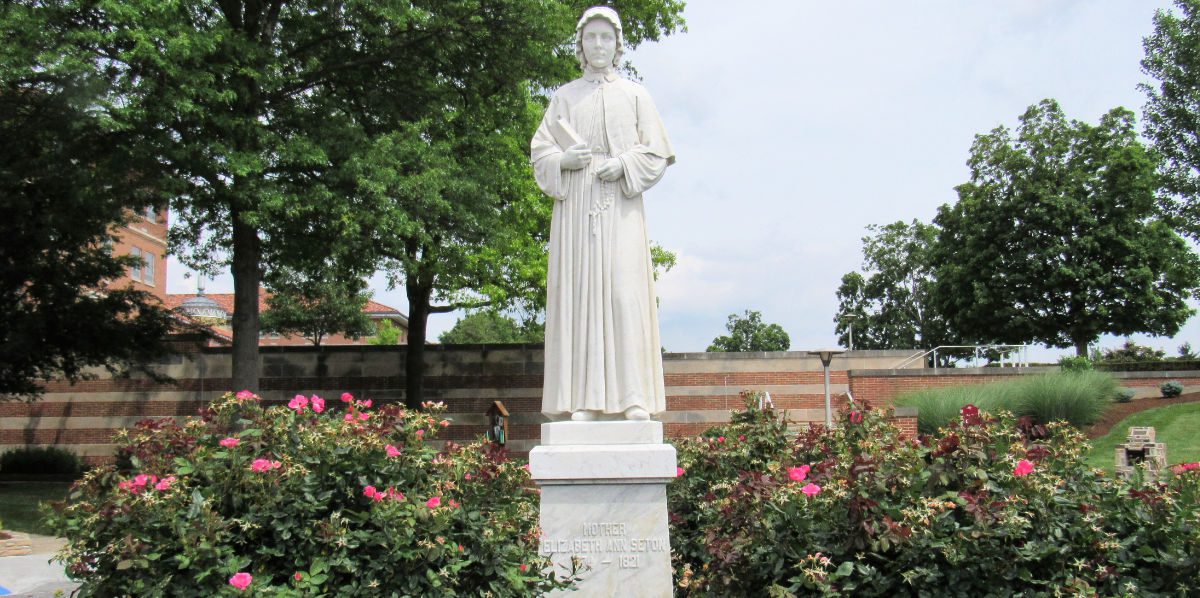
![Women's St. Elizabeth Ann Seton Medal [BM0707]](https://b960748.smushcdn.com/960748/wp-content/uploads/2023/12/BM0707.jpg?lossy=1&strip=1&webp=1)
![Prayer To St. Elizabeth Seton Laminated Prayer Cards [HPR436]](https://b960748.smushcdn.com/960748/wp-content/uploads/2023/12/HPR436.jpg?lossy=1&strip=1&webp=1)
![Round St Elizabeth Ann Seton Medal Prayer Card [PC0042]](https://b960748.smushcdn.com/960748/wp-content/uploads/2023/12/Round-St-Elizabeth-Ann-Seton-Medal-Prayer-Card_PC0042.jpg.jpeg?lossy=1&strip=1&webp=1)
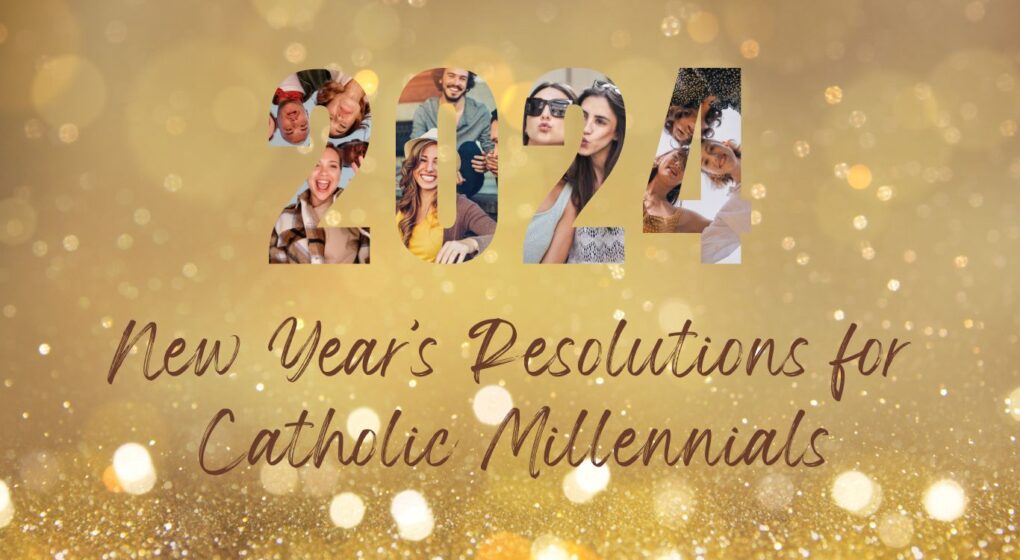
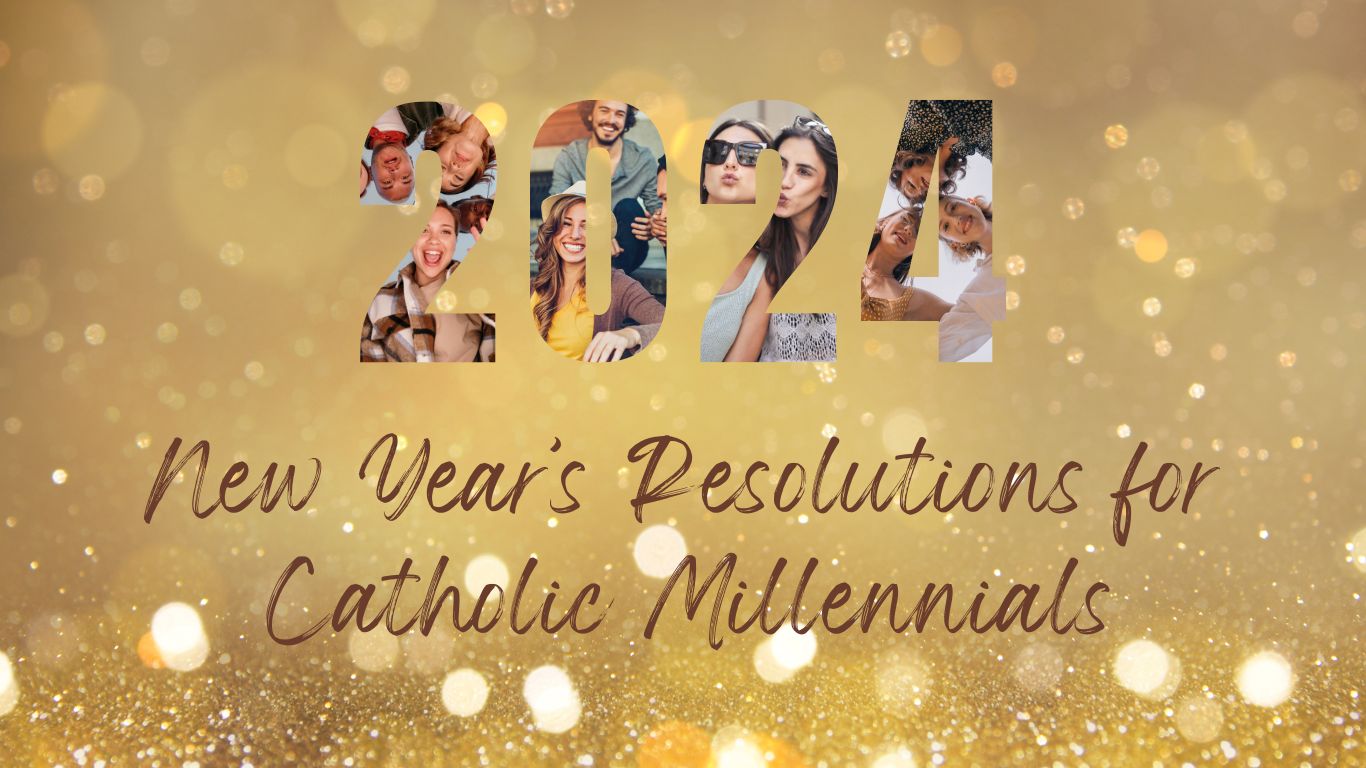
![Pink Jade Gemstone Bead Rosary with Pewter Crucifix and Centerpiece [RB3507]](https://b960748.smushcdn.com/960748/wp-content/uploads/2023/12/Pink-Jade-Gemstone-Bead-Rosary-Pewter-Crucifix-Centerpiece_RB3507.jpg?lossy=1&strip=1&webp=1)
![Magnificat Spiritual Guide [MAG0001]](https://b960748.smushcdn.com/960748/wp-content/uploads/2023/12/Magnificat-Spiritual-Guide_MAG0001.jpg?lossy=1&strip=1&webp=1)
![Magnificat Book Cover Cardinal [ORM007]](https://b960748.smushcdn.com/960748/wp-content/uploads/2023/07/ORM007-Magnificat-Book-Cover-Cardinal-600x600-1.jpg?lossy=1&strip=1&webp=1)


![Holy Family Statue [TGS0020]](https://b960748.smushcdn.com/960748/wp-content/uploads/2023/04/TGS0020-Holy-Family-Statue-600x600-1.jpg?lossy=1&strip=1&webp=1)
![Holy Family In Joseph's Workshop 8x10 Framed Print Under Glass [HFP363]](https://b960748.smushcdn.com/960748/wp-content/uploads/2023/11/HFP363.jpg?lossy=1&strip=1&webp=1)
![Holy Family Pendant [BM0362]](https://b960748.smushcdn.com/960748/wp-content/uploads/2023/11/BM0362.jpg?lossy=1&strip=1&webp=1)


![St John the Apostle Medal [EN6139]](https://b960748.smushcdn.com/960748/wp-content/uploads/2023/11/St-John-the-Apostle-Medal_EN6139.jpg?lossy=1&strip=1&webp=1)
![Women's Eagle of St. John the Apostle Medal [BM0730]](https://b960748.smushcdn.com/960748/wp-content/uploads/2023/11/BM0730.jpg?lossy=1&strip=1&webp=1)
![St John the Evangelist Statue 8.5 inch [GSS023]](https://b960748.smushcdn.com/960748/wp-content/uploads/2023/11/St-John-the-Evangelist-Statue-8-1-2-inch_GSS023.jpg?lossy=1&strip=1&webp=1)


![Kneeling and Madonna Child [CB3051]](https://b960748.smushcdn.com/960748/wp-content/uploads/2023/11/Kneeling-Madonna-Child_CB3051.jpg?lossy=1&strip=1&webp=1)
![Adoration of the Magi da Fabriano 19x27 Framed Print Artboard [HFA5178]](https://b960748.smushcdn.com/960748/wp-content/uploads/2023/11/Adoration-Magi-da-Fabriano-19x27-Framed-Print-Artboard_HFA5178.jpg?lossy=1&strip=1&webp=1)
![Little People Deluxe Nativity Set [ND0001]](https://b960748.smushcdn.com/960748/wp-content/uploads/2023/11/Little-People-Deluxe-Nativity-Set_ND0001.jpg?lossy=1&strip=1&webp=1)
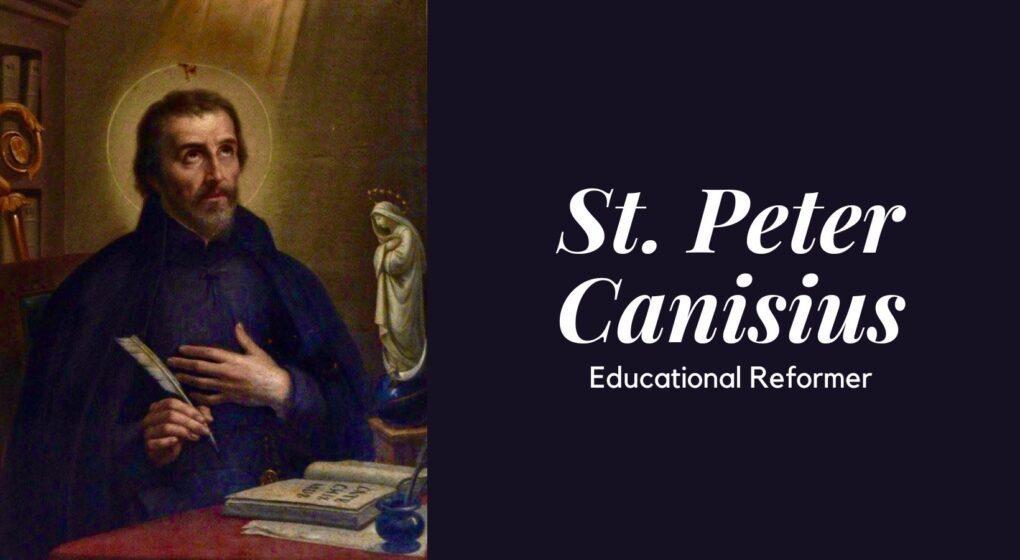
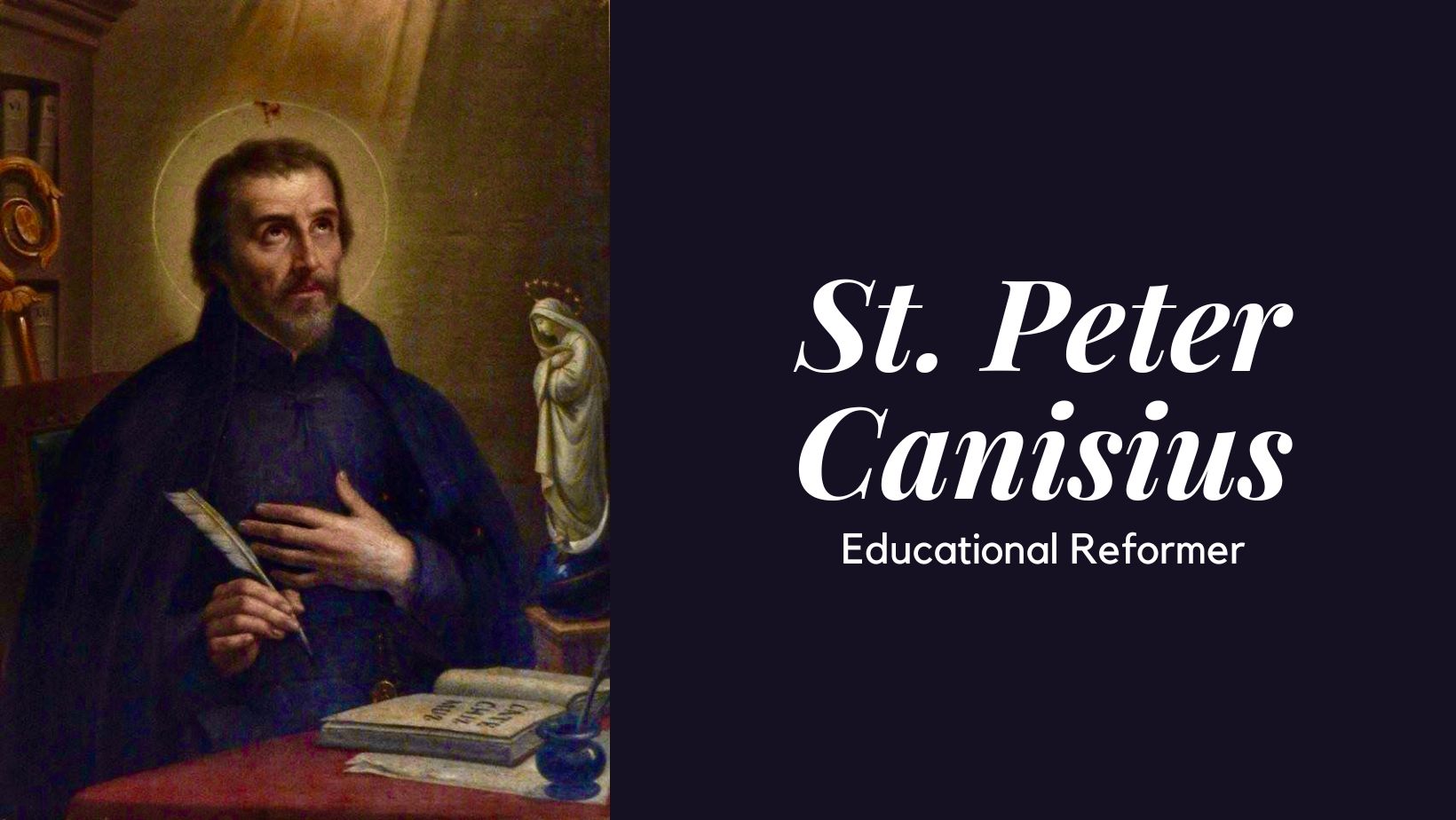
![Mens St Peter Canisius Silver Plated Rosary [RBENM8393]](https://b960748.smushcdn.com/960748/wp-content/uploads/2023/11/Mens-St-Peter-Canisius-Silver-Plated-Rosary_RBENM8393.jpg?lossy=1&strip=1&webp=1)
![Cable Bangle Bracelet Saint Peter Canisius Charm [BRC9393]](https://b960748.smushcdn.com/960748/wp-content/uploads/2023/11/Cable-Bangle-Bracelet-Saint-Peter-Canisius-Charm_BRC9393.jpg?lossy=1&strip=1&webp=1)


![St John of the Cross Medal [REE0097]](https://b960748.smushcdn.com/960748/wp-content/uploads/2023/11/St-John-of-the-Cross-Medal_REE0097.jpg?lossy=1&strip=1&webp=1)
![St. John of the Cross Sterling Silver Heirloom Rosary Fancy Crucifix [RBEN1245]](https://b960748.smushcdn.com/960748/wp-content/uploads/2023/11/RBEN1245.jpg?lossy=1&strip=1&webp=1)
![St. John of The Cross Laminated Prayer Cards [HPR469]](https://b960748.smushcdn.com/960748/wp-content/uploads/2023/11/HPR469.jpg?lossy=1&strip=1&webp=1)


![Round St. Juan Diego Pewter Medal with Prayer Card [PC0048]](https://b960748.smushcdn.com/960748/wp-content/uploads/2023/11/Round-St-Juan-Diego-Pewter-Medal-with-Prayer-Card_PC0048.jpg?lossy=1&strip=1&webp=1)
![St Juan Diego Medal [EN6223]](https://b960748.smushcdn.com/960748/wp-content/uploads/2023/11/St-Juan-Diego-Medal_EN6223.jpg?lossy=1&strip=1&webp=1)
![St. Juan Diego Sterling Silver Heirloom Rosary Squared Crucifix [RBEN0257]](https://b960748.smushcdn.com/960748/wp-content/uploads/2023/11/RBEN0257.jpg?lossy=1&strip=1&webp=1)


![St Nicholas Medal [EN6191]](https://b960748.smushcdn.com/960748/wp-content/uploads/2023/11/St-Nicholas-Medal_EN6191.jpg?lossy=1&strip=1&webp=1)
![St. Nicholas Statue 4" [RM50285]](https://b960748.smushcdn.com/960748/wp-content/uploads/2023/11/RM50285.jpg?lossy=1&strip=1&webp=1)
![St Nicholas Embossed Wood Plaque [HWP908]](https://b960748.smushcdn.com/960748/wp-content/uploads/2023/11/St-Nicholas-Embossed-Wood-Plaque_HWP908.jpg?lossy=1&strip=1&webp=1)


![Holy Family Figure & 3 Kings Nativity Set - 16 Inch [RMCH049]](https://b960748.smushcdn.com/960748/wp-content/uploads/2023/11/Holy-Family-Figure-3-Kings-Nativity-Set-16-Inch_RMCH049.jpg?lossy=1&strip=1&webp=1)
![DiGiovanni Nativity Set with Wood Stable - 6 inch figures [GFCHR1036]](https://b960748.smushcdn.com/960748/wp-content/uploads/2023/11/GFCHR1036.jpg?lossy=1&strip=1&webp=1)
![Nativity Advent Candleholder - 5 candles [CB4544]](https://b960748.smushcdn.com/960748/wp-content/uploads/2023/10/Nativity-Advent-Candleholder-5-candles_CB4544.jpg?lossy=1&strip=1&webp=1)
![Advent Wreath As I Light This Flame I Lay Myself Before Thee [TCG0251]](https://b960748.smushcdn.com/960748/wp-content/uploads/2023/11/TCG0251.jpg?lossy=1&strip=1&webp=1)
![Prepare The Way Advent Pillar Candleholder [CB5241]](https://b960748.smushcdn.com/960748/wp-content/uploads/2023/10/Prepare-The-Way-Advent-Pillar-Candleholder_CB5241.jpg?lossy=1&strip=1&webp=1)
![Men's Smaller Miraculous Medal Necklace [BM0478]](https://b960748.smushcdn.com/960748/wp-content/uploads/2023/11/BM0478.jpg?lossy=1&strip=1&webp=1)
![Men's Deluxe Oval Miraculous Medal [HMM2113]](https://b960748.smushcdn.com/960748/wp-content/uploads/2023/11/Mens-Deluxe-Sterling-Silver-Oval-Miraculous-Pendant_HMM2113.jpg?lossy=1&strip=1&webp=1)
![Men's Classic Oval Miraculous Medal [CM2204]](https://b960748.smushcdn.com/960748/wp-content/uploads/2023/11/CM2204.jpg?lossy=1&strip=1&webp=1)
![Miraculous Medal & Crucifix Double Pendant Set [BLMC0702]](https://b960748.smushcdn.com/960748/wp-content/uploads/2023/11/Sterling-Silver-Miraculous-Medal-Crucifix-Pendant-Set_BLMC0702.jpg?lossy=1&strip=1&webp=1)
![Beaded Border Fleur de Lis Tip Miraculous Medal [HM0715]](https://b960748.smushcdn.com/960748/wp-content/uploads/2023/11/Beaded-Border-Fleur-de-Lis-Tip-Miraculous-Medal_HM0715.jpg?lossy=1&strip=1&webp=1)
![Women's Sterling Silver Rosebud Triple Slide Pendant [RECRX1065]](https://b960748.smushcdn.com/960748/wp-content/uploads/2023/11/Womens-Rosebud-Triple-Slide-Pendant_RECRX1065.jpg?lossy=1&strip=1&webp=1)
![Double Sided Oval St. Michael and Guardian Angel Medal [BM0796]](https://b960748.smushcdn.com/960748/wp-content/uploads/2023/11/BM0796.jpg?lossy=1&strip=1&webp=1)
![Men's Double-Sided I'm A Catholic St. Christopher Necklace [BM0671]](https://b960748.smushcdn.com/960748/wp-content/uploads/2023/11/BM0671.jpg?lossy=1&strip=1&webp=1)
![Women's Dainty Sterling Silver Saint Thérèse Pendant [REM2058]](https://b960748.smushcdn.com/960748/wp-content/uploads/2023/11/St-Therese-Medal-Sterling-Silver_REM2058.jpg?lossy=1&strip=1&webp=1)
![Men's Large Pardon Crucifix Pendant [HM0854]](https://b960748.smushcdn.com/960748/wp-content/uploads/2023/11/Mens-Large-Pardon-Crucifix-Pendant_HM0854.jpg?lossy=1&strip=1&webp=1)
![Risen Sun Crucifix [CM2016]](https://b960748.smushcdn.com/960748/wp-content/uploads/2023/11/Risen-Sun-Crucifix_CM2016.jpg?lossy=1&strip=1&webp=1)
![Men's Large Sterling Silver St. Benedict Crucifix [HM0820]](https://b960748.smushcdn.com/960748/wp-content/uploads/2023/11/Mens-Sterling-Silver-St-Benedict-Crucifix_HM0820.jpg?lossy=1&strip=1&webp=1)
![Sterling Silver Rosary Bracelet -7mm Sterling Silver Round beads [BC0807]](https://b960748.smushcdn.com/960748/wp-content/uploads/2023/11/Sterling-Silver-Rosary-Bracelet-7mm-Sterling-Silver-Round-beads_BC0807.jpg?lossy=1&strip=1&webp=1)
![Jujube Wood Rosary Bracelet - 10mm [RB3539]](https://b960748.smushcdn.com/960748/wp-content/uploads/2023/11/RB3539.jpg?lossy=1&strip=1&webp=1)
![Multi Color Onyx Twisting Rosary Bracelet - 4mm [RB9510]](https://b960748.smushcdn.com/960748/wp-content/uploads/2023/11/Multi-Color-Onyx-Twisting-Rosary-Bracelet-4mm_RB9510-600x600-1.jpg?lossy=1&strip=1&webp=1)
![Father's Manual Deluxe Hardbound Cover [HBK2627]](https://b960748.smushcdn.com/960748/wp-content/uploads/2023/11/Fathers-Manual-Deluxe-Hardbound-Cover_HBK2627.jpg?lossy=1&strip=1&webp=1)
![Mother's Manual Deluxe Hardbound Cover [HBK2676]](https://b960748.smushcdn.com/960748/wp-content/uploads/2023/11/Mothers-Manual-Deluxe-Hardbound-Cover_HBK2676_600x600.jpg?lossy=1&strip=1&webp=1)
![Brown Leather Bible Cover Grizzly [ORM009]](https://b960748.smushcdn.com/960748/wp-content/uploads/2023/11/Brown-Leather-Bible-Cover-Grizzly_ORM009.jpg?lossy=1&strip=1&webp=1)
![Sterling Silver Rosary 7mm [HMBR020]](https://b960748.smushcdn.com/960748/wp-content/uploads/2023/11/HMBR020.jpg?lossy=1&strip=1&webp=1)
![Vintage Inspired Cobalt Blue Glass Bead Rosary with Solid Brass Crucifix and Center [RB3493]](https://b960748.smushcdn.com/960748/wp-content/uploads/2023/11/Vintage-Inspired-Cobalt-Blue-Glass-Bead-Rosary-Solid-Brass-Crucifix-Center_RB3493.jpg?lossy=1&strip=1&webp=1)
![Jujube Wood 5 Decade Rosary [RB3528]](https://b960748.smushcdn.com/960748/wp-content/uploads/2023/11/RB3528.jpg?lossy=1&strip=1&webp=1)
![St. Michael Keepsake Rectangular Box [GSCH1132]](https://b960748.smushcdn.com/960748/wp-content/uploads/2023/11/St-Michael-Keepsake-Rectangular-Box_GSCH1132.jpg?lossy=1&strip=1&webp=1)
![Boy's Baptism Maple Wood Keepsake Box [SRB1000]](https://b960748.smushcdn.com/960748/wp-content/uploads/2023/04/SRB1000-Boys-Baptism-Box-600x600-1.jpg?lossy=1&strip=1&webp=1)
![Celtic Keepsake Box [TCG0055]](https://b960748.smushcdn.com/960748/wp-content/uploads/2023/11/TCG0055.jpg?lossy=1&strip=1&webp=1)
![Holy Family Pendant [EN6347]](https://b960748.smushcdn.com/960748/wp-content/uploads/2023/11/Holy-Family-Pendant_EN6347.jpg?lossy=1&strip=1&webp=1)
![Men's Large Classic Five-Way Medal with Dove Center [CM2087]](https://b960748.smushcdn.com/960748/wp-content/uploads/2023/11/CM2087.jpg?lossy=1&strip=1&webp=1)
![Men's Large Sterling Silver Miraculous Medal with Chain [HM0710]](https://b960748.smushcdn.com/960748/wp-content/uploads/2023/11/Large-Sterling-Silver-Miraculous-Medal-with-Chain_HM0710.jpg?lossy=1&strip=1&webp=1)
![Divine Mercy Auto Backpack Olive Wood Rosary [HRK001]](https://b960748.smushcdn.com/960748/wp-content/uploads/2023/11/Divine-Mercy-Auto-Backpack-Olive-Wood-Rosary_HRK001.jpg?lossy=1&strip=1&webp=1)
![Sacred Heart Pop It [GP005]](https://b960748.smushcdn.com/960748/wp-content/uploads/2023/11/Sacred-Heart-Pop-It_GP005.jpg?lossy=1&strip=1&webp=1)
![Mysteries of the Rosary Reflection Disc Set [GP003]](https://b960748.smushcdn.com/960748/wp-content/uploads/2023/11/Mysteries-Rosary-Reflection-Disc-Set_GP003.jpg?lossy=1&strip=1&webp=1)
![St. Francis Engravable Pewter Pet Medal [MVPM001]](https://b960748.smushcdn.com/960748/wp-content/uploads/2023/11/MVPM001.jpg?lossy=1&strip=1&webp=1)
![Guardian Angel Cat Seated Statue 13.75 Inches [MSA0072]](https://b960748.smushcdn.com/960748/wp-content/uploads/2023/11/Guardian-Angel-Cat-Seated-Statue-13-75_MSA0072.jpg?lossy=1&strip=1&webp=1)
![Angel Cherub with Puppy Garden Statue 12 inch [RM0307]](https://b960748.smushcdn.com/960748/wp-content/uploads/2023/11/RM0307.jpg?lossy=1&strip=1&webp=1)
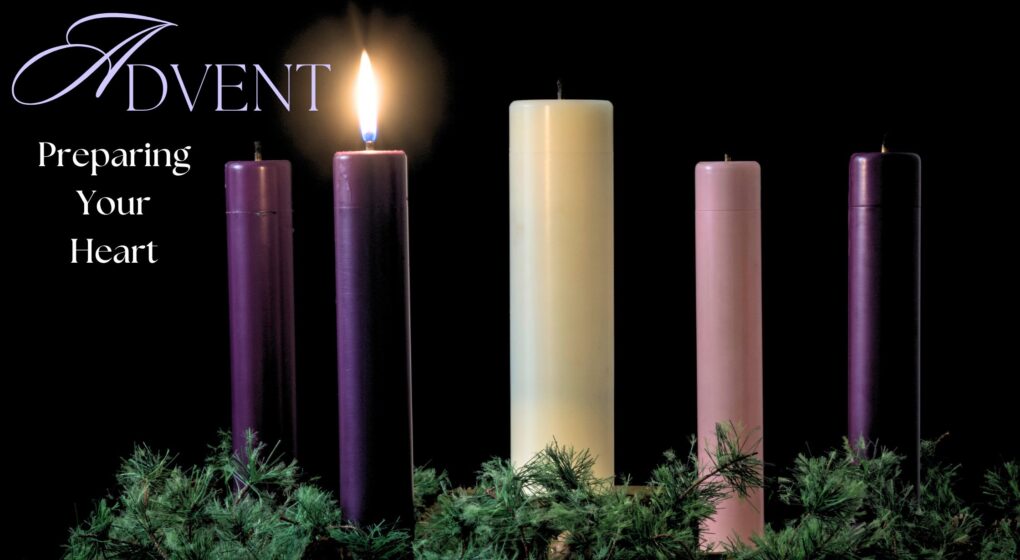

![Deluxe Advent Candle Set 10-inch taper [CAN352]](https://b960748.smushcdn.com/960748/wp-content/uploads/2023/10/Deluxe-Advent-Candle-Set-10-inch-taper_CAN352.jpg?lossy=1&strip=1&webp=1)
![Lighted Las Posada 10.75 inch [RM2145]](https://b960748.smushcdn.com/960748/wp-content/uploads/2023/10/Lighted-Las-Posada-10-75-in_RM2145.jpg?lossy=1&strip=1&webp=1)